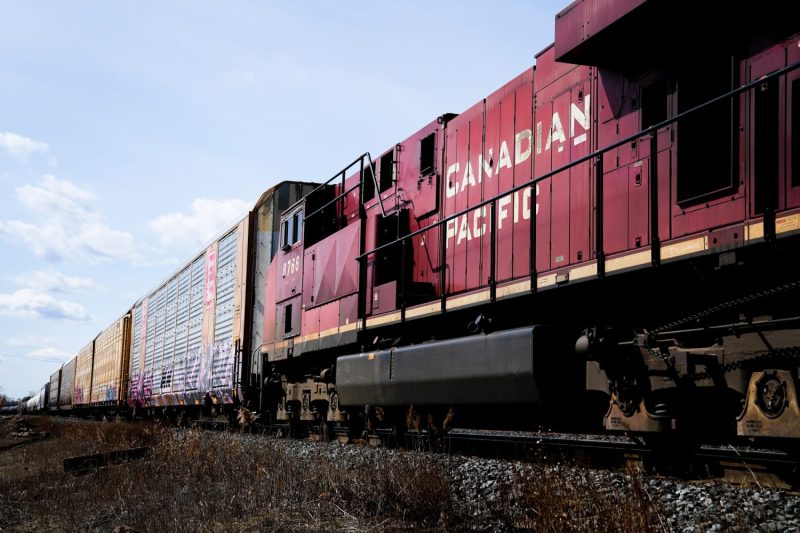Rail workers in Canada have been locked in negotiations with their respective railroads, and tensions are running high as the possibility of a work stoppage looms large. This potential halt in operations at the country’s two largest railroads, Canadian National Railway and Canadian Pacific Railway, has not only raised concerns within Canada but also in the United States due to the integrated nature of the North American supply chain. If the negotiations fail to reach a resolution and a work stoppage occurs, it could have significant implications for the flow of goods and the overall economy on both sides of the border.
The rail industry plays a crucial role in the transportation of goods, with Canadian National Railway and Canadian Pacific Railway being major players in facilitating the movement of a wide range of commodities, including automotive parts, agriculture products, consumer goods, and energy resources. Any disruption in their operations could potentially lead to delays in the delivery of products, increased transportation costs, and inventory shortages for businesses that rely on rail for their supply chain.
One of the key issues at the heart of the negotiations is the working conditions and compensation for rail workers. Issues such as safety protocols, rest periods, and wages are central to the discussions between the unions representing the workers and the rail companies. The outcome of these negotiations will not only impact the livelihoods of the rail workers but also have far-reaching consequences for the efficiency and reliability of the rail transportation network.
The timing of a potential work stoppage is particularly concerning given the ongoing disruptions and challenges in global supply chains caused by the COVID-19 pandemic. The just-in-time inventory practices followed by many businesses could be severely impacted by any delays in rail transportation, leading to ripple effects throughout the economy. Industries such as manufacturing, agriculture, and retail that rely on the timely delivery of raw materials and finished products would be particularly vulnerable to the disruptions caused by a rail work stoppage.
In the event of a work stoppage, businesses on both sides of the border would be forced to find alternative transportation methods, such as trucks or air cargo, to keep their supply chains moving. However, these alternatives are often more expensive and less efficient than rail transportation, leading to increased operating costs and potentially higher prices for consumers. Moreover, the capacity of other transportation modes may not be sufficient to handle the sudden surge in demand caused by the rail disruption, further exacerbating the challenges faced by businesses.
The potential work stoppage at Canada’s two largest railroads serves as a stark reminder of the interconnected nature of the global supply chain and the critical role that the rail industry plays in keeping goods moving efficiently. As negotiations continue between the rail companies and the unions representing the workers, stakeholders on both sides of the border will be closely watching the developments and hoping for a swift and amicable resolution to avoid the potentially disruptive consequences of a prolonged work stoppage.
